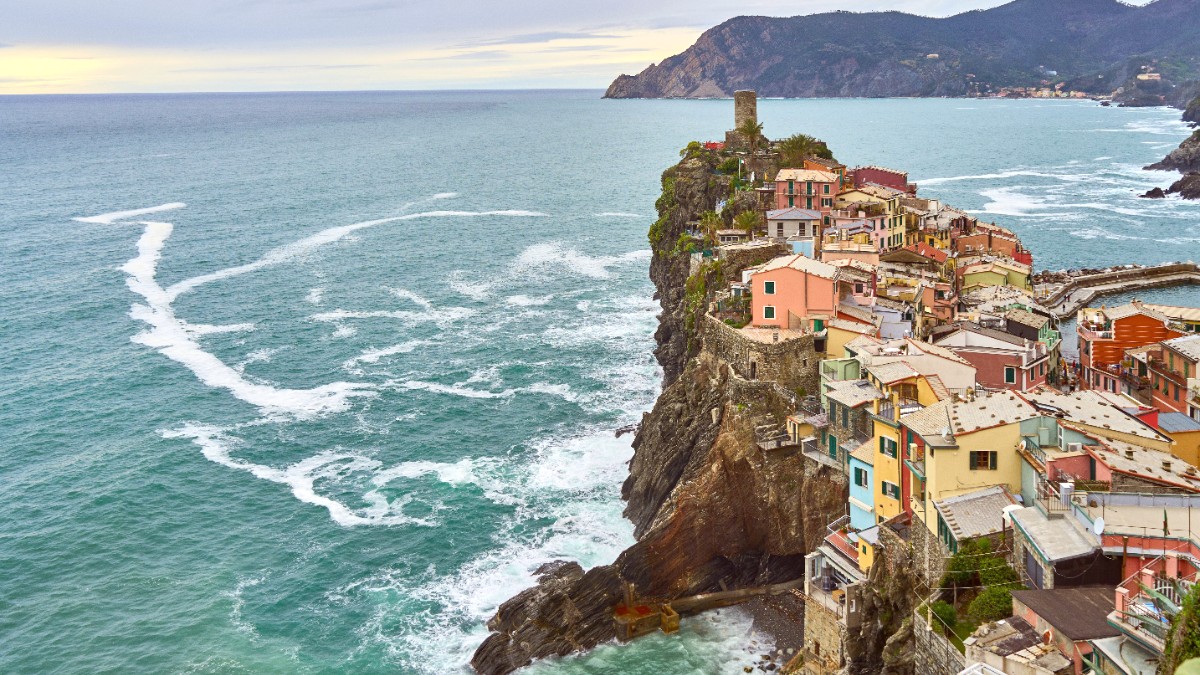
Italy
The Ligurian diet features olive oil, herbs, vegetables, and seafood from the Ligurian Sea. Unlike other Italian regions, Ligurian cooking uses less meat and butter. Pesto, the globally renowned basil sauce, began in Genoa.
This sauce mirrors the region's plentiful basil and olive oil. The focus is on fresh, seasonal ingredients, simply made to let natural flavors come through.
Tipping in Italy is not mandatory or a high percentage. A "coperto" (cover charge) or "servizio" (service charge) may be on your bill. If a service charge is present, no further tip is needed. If not, rounding up or leaving a few euros (€2-€5) for good service is fine.
Espresso is the standard. Order a "cappuccino" for breakfast, but not after mid-morning. Italians seldom drink milk-based coffees after lunch. This cultural norm is generally observed.
This pre-dinner custom (late afternoon/early evening) involves ordering a drink (e.g., Aperol Spritz, local wine) which often comes with complimentary snacks like chips, olives, nuts, or small bites. This can be a delightful and good value way to enjoy light nibbles.
The most famous Ligurian sauce. Made from fresh basil, pine nuts, garlic, Parmesan, Pecorino cheese, and olive oil. Traditionally served with pasta like Trofie or Trenette, often with green beans and potatoes.
Found on nearly every restaurant menu.
A soft, dimpled flatbread often topped with olive oil, salt, rosemary, or onions. Ligurian focaccia is light and oily.
Purchase fresh from local bakeries (Panifici) for a snack or light meal.
A true Vernazza special, fresh from the Ligurian Sea. Prepared fried (Fritte), marinated with lemon and olive oil (Al limone), or salted.
Find these on seafood restaurant menus.
Focaccia (easy from bakeries), Farinata (savory and filling), Fried Seafood Cone (Fritto Misto), with fried anchovies, calamari, and shrimp (from stands near the harbor).
Local cuisine features seasonal produce. Fresh vegetables are plentiful in spring/summer. Olive harvests happen in autumn. Check local event calendars for food festivals, like Lemon Festival in Monterosso (May) or Anchovy Festival in Monterosso (September).
Vernazza has few truly "fine dining" spots. Restaurants highlight fresh, local ingredients and rustic charm. Some present a more upscale experience with elevated cuisine and stunning views.
Most Vernazza restaurants fall into the mid-range category, offering delicious, authentic Ligurian food in a comfortable setting.
For more economical choices, Vernazza has various options.
Vernazza has no large traditional markets or food halls. Small grocery stores (Alimentari) hold basic provisions. For a larger market experience, visit La Spezia (with a daily market) or Levanto.
These nearby towns present greater variety.
International cuisine is quite limited. The dining scene almost solely focuses on traditional Ligurian and Italian dishes.
This focus is part of the village's unique charm.
Finding vegetarian dishes is relatively easy. Pasta with pesto, tomato sauce, or vegetables are common. Focaccia, farinata, and salads are also good choices.
Awareness of gluten-free is growing. Some restaurants may feature gluten-free pasta or bread. Always inquire: "Senza glutine?" (Without gluten?). Cross-contamination is a risk in small kitchens.
Halal and kosher food options are not readily found. Visitors with these requirements may consider self-catering or bringing appropriate snacks.
Clearly share any allergies with your server. Phrases like "Sono allergico/an a [ingrediente]" (I am allergic to [ingredient]) are useful.
Consider carrying a Chef card or a pre-translated note explaining your dietary requirements in Italian.
This aids clear communication in busy settings.
Utilize Translation apps to support communication of your dietary needs.
These apps bridge language barriers effectively.
Many restaurants, notably cliffside or harbor-view ones, present stunning sea views. Book ahead for a prime table, especially for sunset dining.
Enjoying a pre-dinner drink with complimentary snacks while overlooking Vernazza's picturesque harbor is a simple yet delightful experience.
These are a popular culinary workshop in the region, sometimes in Vernazza or nearby villages like Manarola or Levanto. They present a hands-on experience and a chance to learn traditional recipes.
Opportunities exist to visit local vineyards, notably in the hills above Vernazza, for wine tasting. Learn about Cinque Terre DOC wines and the famous Sciacchetrà dessert wine.
Inquire locally or through specialized tour operators for visits to olive groves and other food producers. These experiences offer insight into the local agricultural practices.
This presents an authentic experience and supports the community directly.
Buying from local businesses aids the local economy.
No formal language schools here.
A pocket phrasebook or translation app is useful.
The dining scene is almost exclusively centered on traditional Ligurian and Italian dishes, a highlight of Vernazza.
The region's cuisine values simplicity and uses fresh, locally sourced ingredients like olive oil, herbs, and seafood.
Pesto, a globally famous basil sauce, began in Genoa, the capital of Liguria, reflecting the region's abundance.
Exploring Vernazza's food culture is a true delight.